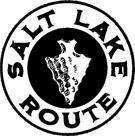St. Thomas
St. Thomas was established January 1865 after Brigham Young ordered the colonization of the Muddy River (Moapa) Valley a few months prior. A townsite was laid out near the confluence of the Virgin and Muddy Rivers, and 600 acres - divided into five-acre lots - were developed for crops. Meanwhile, Mormon settlement continued north where additional settlements were formed, including Overton, St. Joseph, and West Point.
Soon St. Thomas had 600 residents, an attractive community with streets lined with cottonwood trees. At the time, it was believed to be in the Utah Territory, but in 1867 the Arizona Territory named St. Thomas the seat of Pah-Ute County. Nevertheless, the Mormon settlers did not organize a government there, as their allegiance was with the Utah Territory. A boundary survey in 1870, however, showed that St. Thomas and the Muddy River Valley were actually in Nevada, not the Utah or Arizona Territories. Ordered to pay back taxes, most settlers abandoned the valley by February 1871. Among the only to remain was Daniel Bonelli, who continued to operate the post office and lodging for travelers.

In another decade, Mormon settlers returned to the valley and St. Thomas gradually regained a population of a few hundred. In addition to agriculture, silica and salt mining were prominent aspects of the community's economy. In 1911-12, a railroad branch was built to St. Thomas by the San Pedro, Los Angeles and Salt Lake Railroad. The following year, it even became a stop along the Arrowhead Trail, the first automobile road between Salt Lake City and Los Angeles. Its prosperity came to an end in the 1930s, however, with the construction of Hoover Dam. Located in the path of what would become Lake Mead, St. Thomas residents were forced to vacate the community. While many dismantled and moved their homes, the final resident torched his when he left in 1938. For decades the town was submerged, but receding water levels have since allowed the ruins of the town to resurface. Today a trail among the remnants is maintained by the National Park Service as part of Lake Mead National Recreation Area.























































